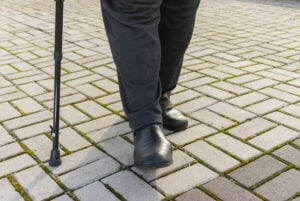
Approximately half of all falls occur in the home and with the older adult population falls are the leading cause of injury. Each year about one in every three people 65 and older sustain a fall. There are things that you can do to prevent falls and make your home safer. Improving your balance and strength by exercising is one major factor you can impact. Having your health provider check and review your medications on a regular basis, having your vision assessed, and making changes in your home can all help in decreasing fall risks.
Home modifications to improve your safety and decrease fall risks can be very simple changes but have a huge impact. Here are some helpful ways to make modifications.
Throughout the entire home:
- Reduce the clutter so there is room to move around
- Remove throw rugs or use double sided tape to secure them to the floor
- Improving the quality of light in your home is critical. As we age the need for brighter light is important for good vision.
- In the bathroom:
- Use grab bars in the shower or by the toilet
- Use a non-skid mat in the shower
- Utilize a shower bench or chair to improve your safety while showering and decrease risk of fatigue and possible falls
- In the kitchen, move items that you use every day to lower shelves to reduce your reach and decrease risk of loss of balance
How you treat your feet is also important when decreasing fall risks. Consider these:
- Wear the proper footwear inside and outside of the home with a good non-skid textured sole
- Going barefoot or wearing slippers is far more likely to increase the risk of falls
- Purchase a stable shoe with a firm heel and laces to hold your foot in the shoe while you are walking
- Proper foot care is important as well to decrease your risk of falls, if you have foot injuries, bunions, or weak foot and ankle muscles you are at a higher risk for falls
- If you have a cane or walker that was recommended to you by a healthcare professional using it at all times is imperative for your safety and was suggested to decrease your risk for falls
Here is a great checklist to check your fall risk:
- Have you fallen before or been injured because of a fall? Y or N
- Do you feel weaker than you used to or do you have less strength in your arms and legs? Y or N
- Have you stopped doing daily activities or avoided exercise because you’re afraid of falling? Y or N
- Do you experience incontinence? Y or N
- Has your hand strength decreased? Y or N
- Has your eyesight diminished or do you have trouble seeing depth or seeing at night? Y or N
- Do you feel dizzy when you stand up? Y or N
- Have you experienced hearing loss? Y or N
- Do you have foot ulcers, bunions, hammertoes or calluses that hurt or cause you to adjust your steps? Y or N
- Do you feel unsteady on your feet or shuffle when you walk? Y or N
If you answered “yes” to one or more of the previously asked questions, you could be at risk for a fall. For more information on whether or not you might be at risk for a fall or need assistance with home modifications, please consult with your physician.
Here are additional resources:
Home Improvement Assistance – ElderCare
Equipment and Products for Aging in Place
Discover the advantages of care coordination through LiveWell.


